Skiing After Dark
Before she was a well-known writer, Annie Proulx lived quietly in Vermont for 30 years, much of it in the Northeast Kingdom. She is the Pulitzer-Prize-winning author of books such as The Shipping News and short stories such as “Brokeback Mountain” (both of which have been made into films). The iconic photo is by Brian Morh/EmberPhoto, taken in the Mad River Valley backcountry.
The house stands in Vermont’s crooked terrain of slanted field and steep wood. A hundred years ago people worked the copper mines and raised sheep in this town. The metal and the sheep are long gone and the population has withered to a few hundred. Yet a network of abandoned roads from those old days, reamed out from time to time by log skidders, still laces the hills. Under deep snow they become superb backcountry ski routes.
My skiing time notches a precise part of the winter day. Sitting and scribbling, telephone talk, reading, typing—how stiff and restless one gets. But in late afternoon, the work ends. The final hours of light are mine and over the years I have come to love skiing in the blue dusk. So important to me are these hours that only a blizzard can keep me inside.
When I start out on the hill it is often sun gilded and, on the return, I can see the way only because of the faint luminescence of the snow and because my eyes have adjusted to the failing light. The crepuscular rim of twilight seems a powerful and mysterious hour for me. The wind drops and a stillness falls. The fading sunset colors unroll like bolts of French silk behind the woods. Wildlife begins to move. I have seen fisher cats, coyotes, foxes on these dusk occasions.
The temperature drops suddenly, well below zero, sometimes so low it is like skiing on fine sand rather than snow. For reasons I cannot explain, I like this biting cold. I ski hard, become warm, then hot.
For a few years, brush has grown up on the hill behind my house, the old pasture reverting to cherry and bramble. In October, a neighbor mowed a trail through the rampant growth. Before the first snow fell, it looked good. But the first trip down was frighteningly fast with a crazy, jumping turn in the middle, and then a straight shot to the bottom. Not fun in the dark. So, halfway down I reverted to the rough, found an oblique but loopy path through the bushes. Business as usual.
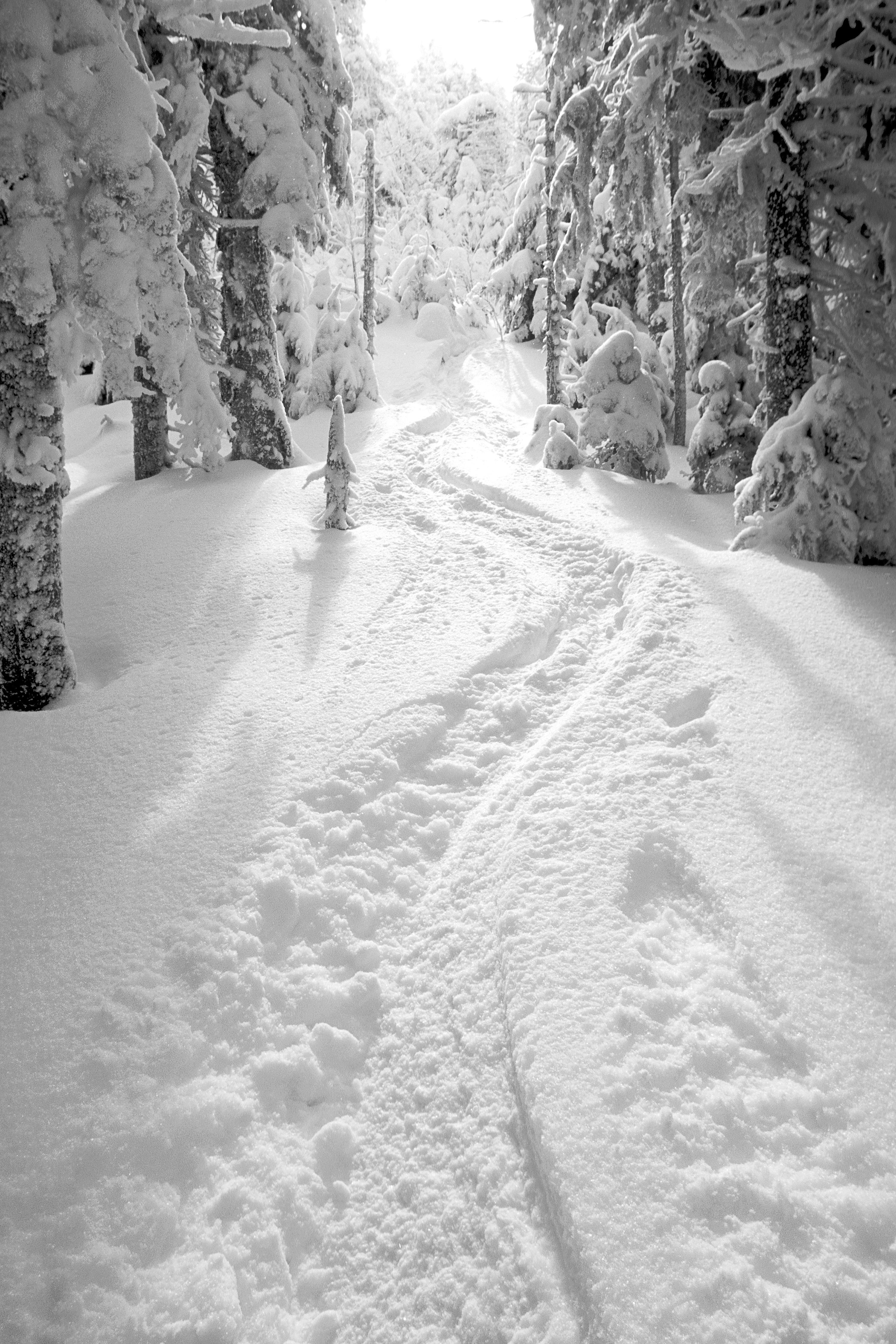
It was a strong winter. Snow and more snow and the relentless cold made it difficult to ski off-trail. The dry snow, four feet deep, was weightless fluff that did not settle. Skis sank far below the surface. Going downhill, a wave of snow rose above my knees; going uphill, I slithered and plunged.
I prayed for a warming trend. It did not come. And I took to the skimobile side trail that lies half a mile beyond my hill. In the late afternoon of weekdays, it was deserted and I flew madly over its surface, across a brook and down a series of steep chutes and twisting corners, an eight-mile loop through the woods, while all around me, deep in the fading light, lay the unblemished, impossible snow.
The physiological advantage of going out late in the day, every day, after the winter solstice is that one becomes intensely sensitive to the lengthening daylight. A minute, another, another, a slow gain of a few minutes a week. The eyes, the senses, the body, responds to these additional slivers of light with joy and a sense of well-being. Here is proof that that the world is turning, spring spinning our way again.
One clear night in February, two friends came over. It was our chance to ski under the full moon. The snow had finally hardened after a brief thaw, and eight inches of fresh powder made perfect cross-country conditions.
The night was very windy and bitterly cold. Before we went out we put Vaseline on our exposed faces. Outside, the moon was riding high and full, the west wind tearing smoke devils off the snow. We climbed the hill, skied down the other side, the lee side, safe from the wind that clashed and clicked the branches of trees on the ridge above. We veered off the trail after a few miles and traversed a hilly pasture. The White Mountains lie roughly 50 miles to the east, great jags filling the horizon in clear weather, but that night the wind was terrible in the mountains, gusts to 100 mph, and the whole Presidential Range boiled in the moonlight like a dim, milky froth.
On we skied in the brilliant moonlight, past the wreck of a deserted farmhouse, along logging roads, the moon glancing through the trees. Our skis kicked up a glittering wake, crystallized exhalations plumed from our mouths. At last the long climb back and the final, reluctant descent in violent wind.
Back in the kitchen, faces burning, we drank Zinfandel and ate midnight spaghetti with plenty of fiery peppers in the sauce. Outside, the thermometer read eight below zero.
In spring the layers of snow melted slowly, exposing old ski tracks made months before. The marks of our moonlight journey, pale welts across the decaying snow, revived that night so cold and windy, so wild and beautiful, we could hardly bear to stop skiing, even when the moon disappeared.

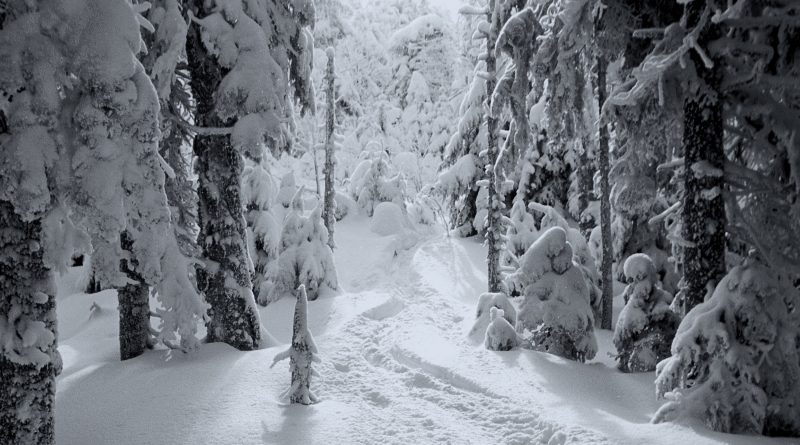
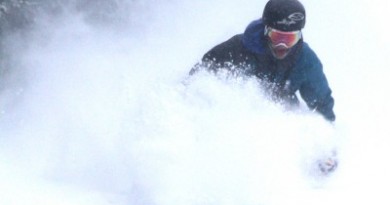
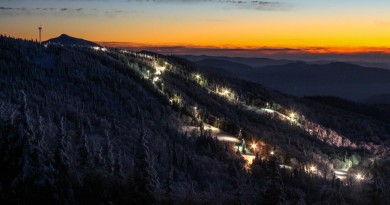
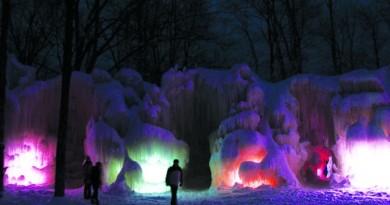
Pingback: The Backyard – Cuckoo Tales